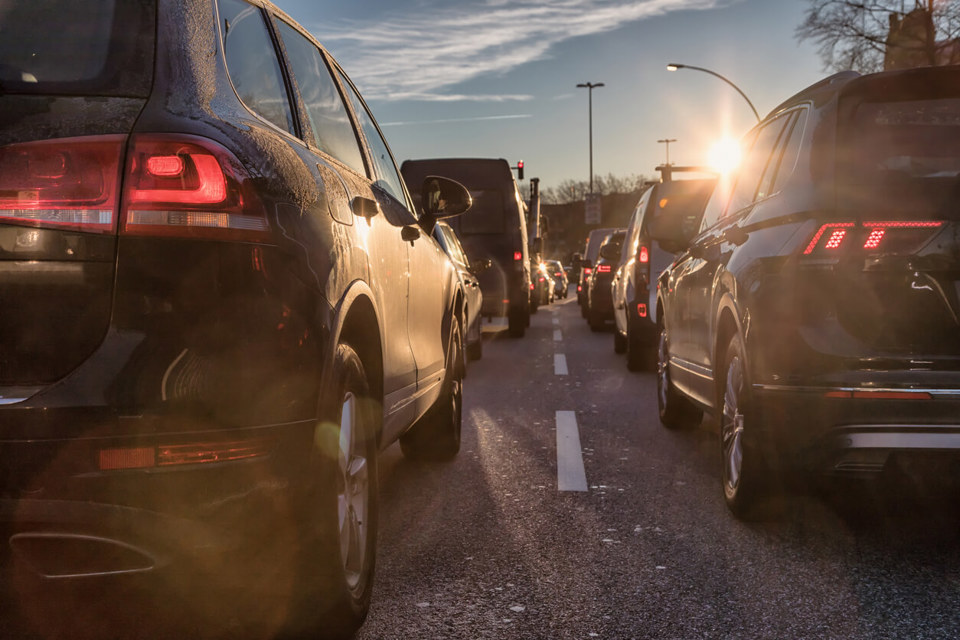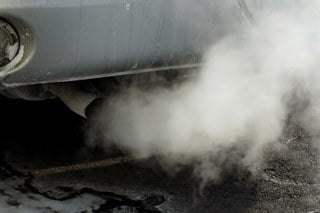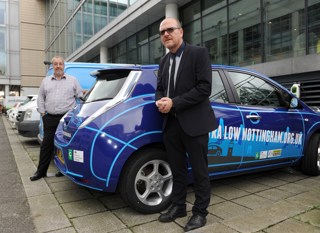The Government has vowed to listen to fleet concerns about clean air zones (CAZs), after the early introduction of London’s ultra-low emission zone was widely criticised.
In addition to London, there are five other cities – Birmingham, Derby, Leeds, Nottingham and Southampton – which will have to introduce CAZs by 2019.
However, the Government identified a further 23 local authorities in its air quality plan where CAZs could be introduced to drive down emissions.
But, Vicky Edmonds, director of environmental strategy at the Department for Transport (DfT), insists the Government is in listening mode.
She said: “There’s a lot of confusion about which cities might have clean air zones, what that might mean, how are they going to be rolled out, how much will I be charged, how will that happen, how will I make sure that my vehicle is compliant and how can I future-proof my fleet operations?”
Minimum standards
A clean air zone framework, published in May, suggests Euro 4 petrol/Euro 6 diesel for cars and vans, and Euro VI for trucks as minimum standards.
However, Islington Council has already broken ranks with a proposal to introduce a £2 parking surcharge in its north London borough for all diesel vehicles, including Euro 6 and diesel-hybrid.
Nevertheless, Edmonds told delegates at the Energy Saving Trust’s Fleet Hero Conference, that the framework could alleviate their concerns.
She said: “There should be consistency, but we know there are still worries and the Government is very keen to talk to people to make sure they are aware of all the challenges they face.”
These concerns, she said, would be shared with local authorities, but fleet operators should also talk to councils in the areas where they operate to ensure their concerns are being heard.
The Government’s air quality plan, which it published in July, puts the burden on local authorities to tackle the causes of air pollution.
Local authorities will need to set out their initial plans by the end of March 2018.
These will be followed by final plans by the end of December 2018.
Edmonds said: “We’re giving local authorities the chance to put together their own plans on how they will achieve compliance in the shortest possible time.
“But Government is ready to step in if those plans don’t deliver and there is the idea of charging clean air zones to meet that challenge.”
Tough new emissions standards for vehicles entering central London came into force last month.
The £10 ‘toxicity charge’, also known as the Emissions Surcharge or T-charge, operates on top of, and during the same operating times as, the city’s congestion charge (Monday to Friday 7am-6pm). It now costs £21.50 to drive a pre-Euro 4 vehicle in the zone.
However, despite only just being introduced, the T-charge is now due to be replaced 17 months earlier than originally planned with a tougher regime, the ultra-low emission zone (ULEZ).
From April 2019, the ULEZ will replace the T-charge and operate in the same area, alongside the congestion charge (C-charge).
Diesel vehicles that do not meet the Euro 6 standards and most petrol vehicles that do not meet the Euro 4 standard will have to pay.
But, unlike the T-charge and C-charge, which are only in place on weekdays, it will operate 24 hours a day, seven days a week, 365 days a year.
There will be two ULEZ charge levels: £12.50 a day for cars, vans and motorbikes and £100 a day for lorries, buses and coaches. These will be in addition to the C-charge, so the more polluting cars and vans would pay £24 per day and trucks would pay £111.50 during C-charge hours.
Up to 60,000 vehicles every day will be subject to the new charge, compared to the estimated 6,500 a day affected by the T-charge.
Heavier vehicles hit hardest
It is clear that operators of heavier vehicles, with their longer replacement cycles, face the biggest upheaval. The shorter replacement cycle of company cars should ensure car fleets are compliant.
Natalie Chapman, head of policy for London at the Freight Transport Association (FTA), said: “By April 2019, there will only be two-and-a-half years’ production of vans available for operators to purchase, with little or no compliant second-hand market. This will put pressure on operators already working to fragile margins.”
Residents based within the ULEZ have been given until April 2022 before they must comply with emissions standards and the FTA wants the same exemption to be given to the freight operators who keep London’s businesses and consumers supplied and working.
The British Vehicle Rental and Leasing Association (BVRLA) has also called for special consideration to be given to commercial vehicle operators, particularly small-to-medium enterprises (SMEs).
Gerry Keaney, chief executive of the BVRLA, said: “We need a carefully blended set of incentives and restrictions that removes the oldest, most polluting diesel vehicles without crippling our economy or punishing people for decisions they have already made.”
Road transport emissions in central London are expected to reduce by an additional 20% in 2019 as a result of the early introduction of the ULEZ. NOx emissions from HGVs are expected to reduce by nearly 50%; coach and non-Transport for London (TfL) bus emissions will reduce by more than a third; and emissions from cars and vans are expected to reduce by 8% and 12% respectively.
John Pryor, chairman of fleet body ACFO, said: “Fleets invariably lead the way in operating the ‘cleanest’ vehicles on the UK’s roads and while this timescale may well present operational and cost challenges for some businesses, we have to move forward and play our part in tackling this very serious public health issue.”
A catalyst for change
Simon Baker, head of fleet and compliance at CitySprint, told Fleet News he welcomed the new regulations and said it will help drive the company’s deployment of electric vehicles (EVs).
However, he added: “Bringing forward the ULEZ will have an affect on CitySprint’s self-employed couriers who do not all necessarily have ULEZ-compliant vehicles.
“Many couriers who want to operate within the ULEZ will need to make a choice: replace relatively new vehicles or pay the extra charge.”
From an operations perspective, CitySprint’s ‘smart’ despatch systems will allow it to select couriers with compliant vehicles for all work within the zone, but Baker suggested that the availability of compliant vehicles could lead to extended collection times in busy periods.
To combat this, CitySprint has started introducing electric cargo bikes and currently has 20 operating within the ULEZ zone.
“We have also enlarged our use of electric vehicles and are testing a hydrogen fuel cell vehicle too,” said Baker. “CitySprint will embrace the ULEZ and use it as a catalyst to deploy zero emissions vehicles within the ULEZ area well ahead of the 2019 deadline.”
Norman Harding, corporate fleet manager at Hackney Borough Council, fears the planned expansion of ULEZ in 2020 (to Greater London) might impact his operations.
He said: “Dependent on the details of the full roll-out of ULEZ, potentially to the North and South Circulars , I will have to rework my fleet replacement programme and spend considerably to meet the requirement.”
Harding is now looking at funding options and considering bringing forward some vehicles that he would have operated longer to capitalise on the residual values.
All eyes are on London, because the ULEZ could become a template for other clean air zones around the country.
However, the CAZ framework does encourage cities and towns to go further than the minimum Euro standards used in London and says they will be updated “periodically”.
The Department for Environment, Food and Rural Affairs (Defra), however, says it won’t change its minimum standards before 2025 in order to give businesses a level of certainty.
Keaney concluded: “Diesel vehicles play an essential role in transporting goods and people around the country, but the emissions they produce on low-speed urban roads means they have no long-term future in our cities.”
- Diesel has been dealt a further blow with the Government's decision to incorporate Real Driving Emissions Step 2 (RDE2) standards in benefit-in-kind and vehicle excise duty rules.






















Login to comment
Comments
No comments have been made yet.